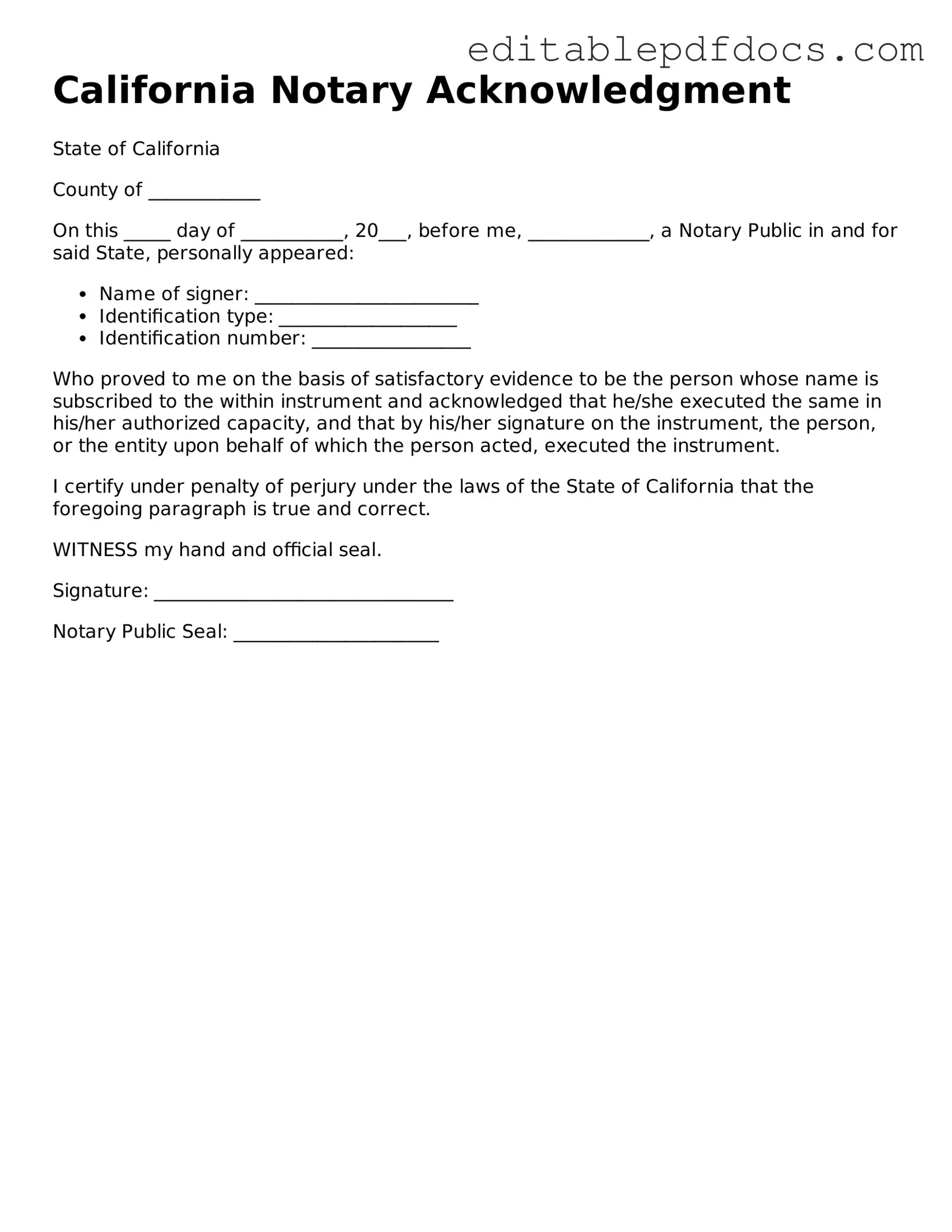In California, the Notary Acknowledgement form plays a crucial role in the notarization process, ensuring that documents are properly authenticated and legally recognized. This form is typically used when a person signs a document in front of a notary public, who verifies the identity of the signer and confirms that they are signing willingly and without any coercion. The form contains specific details, such as the date of the acknowledgment, the name of the signer, and the notary's information, including their signature and seal. It serves as a formal declaration that the individual signing the document is indeed who they claim to be and has understood the contents of the document they are signing. By providing a structured format, the Notary Acknowledgement form helps prevent fraud and ensures that important documents—like contracts, deeds, and powers of attorney—are executed with integrity. Understanding the importance of this form is essential for anyone involved in legal transactions or documentation in California, as it contributes to the overall validity and enforceability of various legal instruments.
